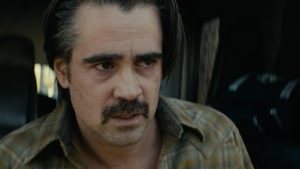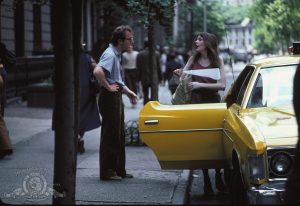Brown twisting twigs support white and pastel pink flowers. The blooms’ sweet scent floats in the warm breeze running off the Tidal Basin while, across the water, the flowers blend into puffy clouds. With their visual and olfactory aesthetics, the trees at the Cherry Blossom festival are works of art.
This idea, that nature is art, forms the basis of an artistic movement called Land Art. Started in the 1960s, the movement focuses on creating art out of and within nature. Artists frequently use sticks, leaves, flowers, grass, earth, and water in their works. Creating natural art that interacts with its environment is the movement’s theme. The East Wing of the National Gallery houses Roof, a stone Land Art sculpture by Andy Goldsworthy, which reflects the characteristics of this movement.
Goldsworthy is a British land artist famous for his rock designs and the ephemeral nature of most of his pieces. In the winter months of 2004 and 2005, Goldsworthy installed Roof in the National Gallery. Though made with stone, a typical material for Goldsworthy, the permanent nature of the creation is more unusual. Roof is a compilation of nine hollow domes made by layering slate stones on top of each other. The diameter of each dome is about twenty-seven feet and the height is about five-and-a-half feet; the scale commands the viewer’s attention. The blue-gray stones gently slope toward the apex, which causes the rough edges of the walls to appear soft and smooth. Goldsworthy left open, circular holes in the top of each dome to play with light effects. Given the installation’s location in the East Wing, the sun never shines through the holes to illuminate the dome’s interiors. These black holes add mystery to the domes, whose structures already conjure images of Celtic burial mounds.
Though mysterious and other-worldly, viewers can interact with the installation. The domes are not completely sequestered behind a glass wall, so people can touch half of a mound. In this way, viewers can establish a tactile relationship with the piece and better understand its material and construction. In term of interacting with the environment, the round domes made of visibly distinct pieces of rock contrast with the smooth, seamless, angular walls of the East Wing. The piece reminds viewers of the raw stone that National Gallery, monuments, and federal buildings were built from. Roof calls attention back to the raw beauty of unpolished, un-carved stone.
Visiting the cherry blossoms reminded me that nature and art are synonymous. The Land Art movement adopts this view, which Goldsworthy’s Roof embodies. In an interview, Goldsworthy explained his ideas best: “My art is an attempt to reach beyond the surface appearance. I want to see growth in wood, time in stone, nature in a city, and I do not mean its parks but a deeper understanding that a city is nature too – the ground upon which it is built, the stone with which it is made.”
Photo: Thom Watson via Flickr




